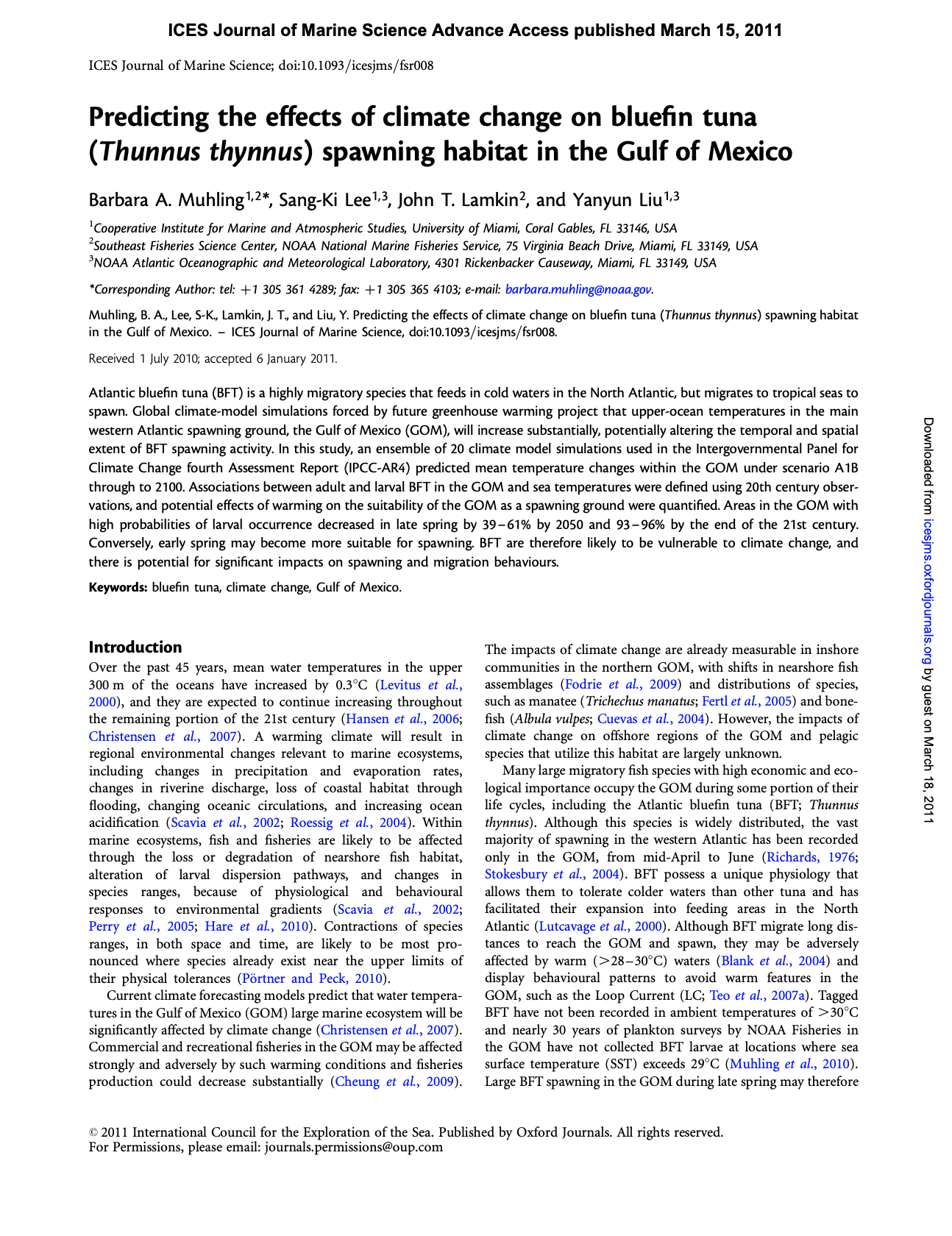Muhling, B. A., S.-K. Lee, J. T. Lamkin and Y. Liu, 2011. Predicting the Effects of Climate Change on Bluefin Tuna (Thunnus thynnus) Spawning habitat in the Gulf of Mexico. ICES Journal of Marine Science, doi:10.1093/icesjms/fsr008
Abstract:
Atlantic bluefin tuna (BFT) is a highly migratory species that feeds in cold waters in the North Atlantic, but migrates to tropical seas to spawn. Global climate-model simulations forced by future greenhouse warming project that upper-ocean temperatures in the main western Atlantic spawning ground, the Gulf of Mexico (GOM), will increase substantially, potentially altering the temporal and spatial extent of BFT spawning activity. In this study, an ensemble of 20 climate model simulations used in the Intergovernmental Panel for Climate Change fourth Assessment Report (IPCC-AR4) predicted mean temperature changes within the GOM under scenario A1B through to 2100. Associations between adult and larval BFT in the GOM and sea temperatures were defined using 20th century obser- vations, and potential effects of warming on the suitability of the GOM as a spawning ground were quantified. Areas in the GOM with high probabilities of larval occurrence decreased in late spring by 39–61% by 2050 and 93–96% by the end of the 21st century. Conversely, early spring may become more suitable for spawning. BFT are therefore likely to be vulnerable to climate change, and there is potential for significant impacts on spawning and migration behaviours.
